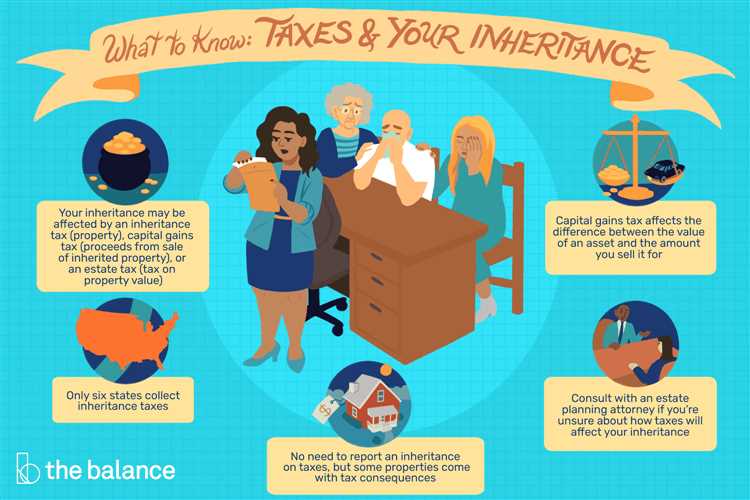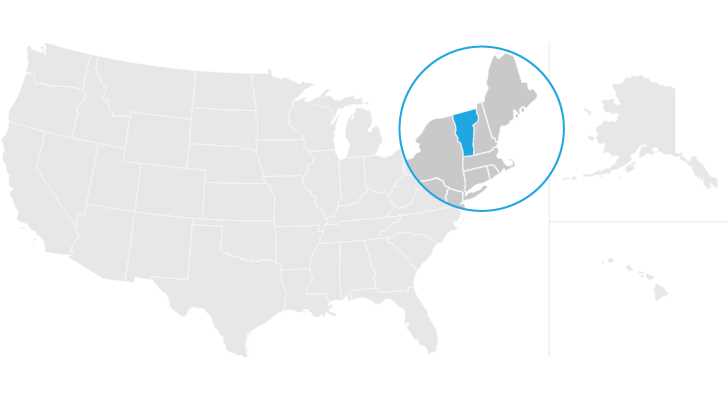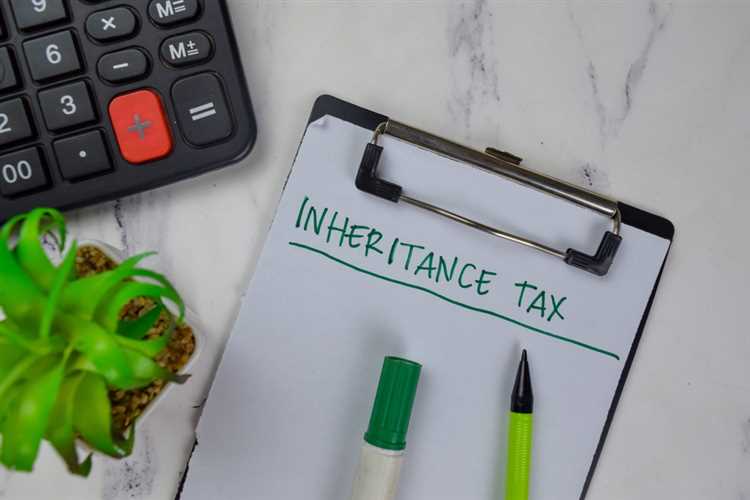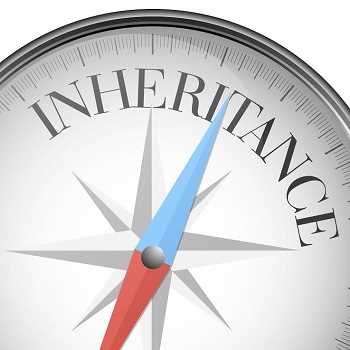- Understanding Inheritance Tax in Minnesota
- What is Inheritance Tax?
- How Does Inheritance Tax Work in Minnesota?
- Exemptions and Rates
- Filing Inheritance Tax in Minnesota
- Who is Responsible for Filing?
- Question-answer:
- What is inheritance tax in Minnesota?
- Who is responsible for paying inheritance tax in Minnesota?
- Are there any exemptions or exclusions from inheritance tax in Minnesota?
- How is the inheritance tax rate determined in Minnesota?

When it comes to estate planning, understanding the intricacies of inheritance tax is crucial. In Minnesota, the rules and regulations surrounding inheritance tax can be complex, but with the right knowledge, you can navigate the process with ease.
Minnesota is one of the few states that still imposes an inheritance tax, which is a tax on the assets inherited by beneficiaries after the death of the owner. This tax is separate from the federal estate tax and is based on the relationship between the deceased and the beneficiary.
It’s important to note that not all inheritances are subject to tax in Minnesota. Immediate family members, such as spouses, parents, and children, are generally exempt from inheritance tax. However, more distant relatives and non-relatives may be subject to tax at varying rates.
To determine the amount of inheritance tax owed, Minnesota uses a progressive tax rate system. The tax rates range from 0% to 16% and are based on the value of the inherited assets. The higher the value of the assets, the higher the tax rate.
It’s also worth mentioning that Minnesota has a unique provision called the “small estate affidavit,” which allows estates valued at $75,000 or less to bypass the probate process and avoid inheritance tax altogether. This can be a valuable tool for simplifying the transfer of assets and minimizing tax liability.
Overall, understanding the ins and outs of inheritance tax in Minnesota is essential for effective estate planning. By familiarizing yourself with the rules and seeking professional advice, you can ensure that your loved ones are well-prepared and protected when it comes to their inheritance.
Understanding Inheritance Tax in Minnesota
Inheritance tax is a tax that is imposed on the transfer of assets from a deceased person to their beneficiaries. In Minnesota, inheritance tax is levied on the value of the assets received by the beneficiaries, and the tax rate varies depending on the relationship between the deceased person and the beneficiary.
It is important to note that inheritance tax is different from estate tax. While estate tax is based on the total value of the deceased person’s estate, inheritance tax is based on the value of the assets received by each individual beneficiary.
In Minnesota, the inheritance tax rates range from 0% to 16%, depending on the relationship between the deceased person and the beneficiary. Spouses and children are generally exempt from inheritance tax, while other beneficiaries such as siblings, nieces, nephews, and friends may be subject to the tax.
When it comes to filing inheritance tax in Minnesota, it is the responsibility of the executor or personal representative of the deceased person’s estate to file the necessary forms and pay the tax. The executor must file the Minnesota Estate Tax Return (Form M706) and the Inheritance Tax Return (Form M706S) within nine months of the date of death.
It is important to consult with a qualified tax professional or attorney to ensure compliance with all inheritance tax laws in Minnesota. They can provide guidance on the specific exemptions and rates that may apply to your situation and assist with the filing process.
What is Inheritance Tax?
Inheritance tax is a tax that is imposed on the transfer of assets or property from a deceased person to their heirs or beneficiaries. It is a tax that is separate from the estate tax, which is imposed on the total value of a person’s estate after their death. Inheritance tax is based on the value of the assets or property that is being transferred, and it is the responsibility of the heirs or beneficiaries to pay this tax.
The purpose of inheritance tax is to generate revenue for the state and to ensure that wealth is distributed fairly among individuals. It is a way for the government to collect taxes on the transfer of wealth from one generation to the next. Inheritance tax rates and exemptions vary from state to state, and it is important to understand the specific laws and regulations in your state.
In Minnesota, inheritance tax is imposed on the transfer of assets or property from a deceased person to their heirs or beneficiaries. The tax rate depends on the relationship between the deceased person and the heir or beneficiary. Spouses and children are generally exempt from inheritance tax, while other relatives and non-relatives may be subject to different tax rates.
It is important to note that inheritance tax is different from estate tax. Estate tax is imposed on the total value of a person’s estate after their death, while inheritance tax is imposed on the transfer of specific assets or property. Both taxes can apply to the same estate, depending on the state’s laws.
Overall, inheritance tax is a way for the government to collect taxes on the transfer of wealth from one generation to the next. It is important to understand the specific laws and regulations in your state to ensure that you are in compliance with the tax requirements.
How Does Inheritance Tax Work in Minnesota?
Inheritance tax is a tax that is imposed on the transfer of assets from a deceased person to their beneficiaries. In Minnesota, the inheritance tax is calculated based on the value of the assets received by each beneficiary.
When someone passes away in Minnesota, their estate is subject to inheritance tax if the total value of the estate exceeds a certain threshold. The tax rates vary depending on the relationship between the deceased person and the beneficiary.
Spouses and children are generally exempt from inheritance tax in Minnesota. However, other beneficiaries, such as siblings, nieces, nephews, and friends, may be subject to the tax. The tax rates for non-exempt beneficiaries range from 12% to 16%.
To determine the value of the assets subject to inheritance tax, the executor of the estate must file an inheritance tax return with the Minnesota Department of Revenue. The return must include a detailed inventory of the assets and their estimated values.
Once the return is filed, the Department of Revenue will review the information and calculate the amount of inheritance tax owed. The executor is responsible for paying the tax from the estate’s assets before distributing them to the beneficiaries.
If the inheritance tax is not paid within nine months of the decedent’s death, interest and penalties may be imposed. It is important for the executor to accurately assess the value of the assets and file the return in a timely manner to avoid any additional costs.
Exemptions and Rates
In Minnesota, there are certain exemptions and rates that apply to inheritance tax. These exemptions determine whether or not an individual is required to pay inheritance tax on the assets they receive from a deceased person.
Firstly, it’s important to note that spouses are exempt from inheritance tax in Minnesota. This means that if a spouse inherits assets from their deceased partner, they will not be required to pay any inheritance tax on those assets.
Additionally, there is a small estate exemption in Minnesota. If the total value of the estate is less than $1.8 million, no inheritance tax is owed. This exemption is designed to provide relief for smaller estates and ensure that the tax burden is not overly burdensome for those with limited assets.
For estates that exceed the small estate exemption, the inheritance tax rates in Minnesota vary depending on the relationship between the deceased person and the heir. The rates range from 12% to 16% and are based on the value of the assets being inherited.
Here is a breakdown of the inheritance tax rates in Minnesota:
| Relationship to Deceased | Inheritance Tax Rate |
|---|---|
| Children, grandchildren, parents, and grandparents | 12% |
| Brothers, sisters, nieces, and nephews | 15% |
| All other beneficiaries | 16% |
It’s important to note that these rates are subject to change, so it’s always a good idea to consult with a tax professional or the Minnesota Department of Revenue for the most up-to-date information.
Overall, understanding the exemptions and rates for inheritance tax in Minnesota is crucial for individuals who may be inheriting assets. By knowing the rules and regulations, individuals can properly plan for any potential tax liabilities and ensure that they are in compliance with the law.
Filing Inheritance Tax in Minnesota
When it comes to filing inheritance tax in Minnesota, there are certain steps that need to be followed. The process can seem overwhelming, but with the right information, it can be done smoothly.
The first step in filing inheritance tax is to gather all the necessary documents. This includes the death certificate of the deceased, as well as any relevant legal documents such as wills or trusts. It is important to have all the paperwork in order to ensure a smooth filing process.
Once all the documents are gathered, the next step is to determine the value of the estate. This includes calculating the total value of all assets owned by the deceased, including real estate, bank accounts, investments, and personal property. It is important to be thorough and accurate in this step to avoid any potential issues with the filing.
After determining the value of the estate, the next step is to calculate the inheritance tax owed. In Minnesota, the inheritance tax rates vary depending on the relationship between the deceased and the beneficiary. Spouses and children have different tax rates compared to other relatives or non-relatives. It is important to consult the Minnesota Department of Revenue or a tax professional to ensure the correct tax rates are applied.
Once the inheritance tax is calculated, the next step is to complete the necessary forms. In Minnesota, the inheritance tax return form is called Form M706. This form requires detailed information about the deceased, the beneficiaries, and the value of the estate. It is important to fill out the form accurately and completely to avoid any delays or issues with the filing.
After completing the form, it must be filed with the Minnesota Department of Revenue. The form can be filed electronically or by mail. It is important to keep a copy of the filed form for your records.
Finally, it is important to pay the inheritance tax owed. The payment can be made online or by mail, and it must be submitted by the due date specified by the Minnesota Department of Revenue. Failure to pay the tax on time may result in penalties and interest.
Overall, filing inheritance tax in Minnesota requires careful attention to detail and adherence to the necessary steps. It is recommended to consult a tax professional or the Minnesota Department of Revenue for guidance throughout the process to ensure a smooth and accurate filing.
Who is Responsible for Filing?
In Minnesota, the responsibility for filing inheritance tax falls on the personal representative of the deceased person’s estate. The personal representative is typically named in the deceased person’s will or appointed by the court if there is no will. It is their duty to gather all the necessary information and file the inheritance tax return with the Minnesota Department of Revenue.
The personal representative must file the inheritance tax return within nine months from the date of the decedent’s death. If the return is not filed within this timeframe, penalties and interest may be assessed. It is important for the personal representative to keep accurate records and ensure that all required documentation is included with the return.
When filing the inheritance tax return, the personal representative must provide detailed information about the deceased person’s assets, including their value at the time of death. This may include real estate, bank accounts, investments, and personal property. The personal representative must also provide information about any debts or liabilities of the estate.
It is important to note that not all estates are subject to inheritance tax in Minnesota. There are certain exemptions and thresholds that determine whether or not an estate is required to pay inheritance tax. The personal representative should consult with an attorney or tax professional to determine if the estate is subject to inheritance tax and to ensure that all necessary steps are taken to comply with the law.
| Responsibilities of the Personal Representative | Responsibilities of the Minnesota Department of Revenue |
|---|---|
| File the inheritance tax return | Review the inheritance tax return |
| Provide detailed information about the deceased person’s assets and liabilities | Assess any penalties or interest for late or incorrect filing |
| Ensure all required documentation is included with the return | Collect any inheritance tax owed |
| Pay any inheritance tax owed | Provide guidance and assistance to personal representatives |
Overall, the personal representative plays a crucial role in the inheritance tax filing process in Minnesota. They are responsible for ensuring that the estate complies with all applicable laws and regulations, and for accurately reporting the deceased person’s assets and liabilities. By fulfilling their duties, the personal representative helps to ensure a smooth and efficient transfer of assets to the beneficiaries of the estate.
Question-answer:
What is inheritance tax in Minnesota?
Inheritance tax in Minnesota is a tax imposed on the transfer of property or assets from a deceased person to their heirs or beneficiaries.
Who is responsible for paying inheritance tax in Minnesota?
The responsibility for paying inheritance tax in Minnesota falls on the heirs or beneficiaries who receive the property or assets from the deceased person.
Are there any exemptions or exclusions from inheritance tax in Minnesota?
Yes, there are certain exemptions and exclusions from inheritance tax in Minnesota. For example, spouses are exempt from paying inheritance tax, and there is also a small estate exemption for estates below a certain value.
How is the inheritance tax rate determined in Minnesota?
The inheritance tax rate in Minnesota is determined based on the value of the property or assets being transferred and the relationship between the deceased person and the heir or beneficiary. The tax rates range from 0% to 16%.






